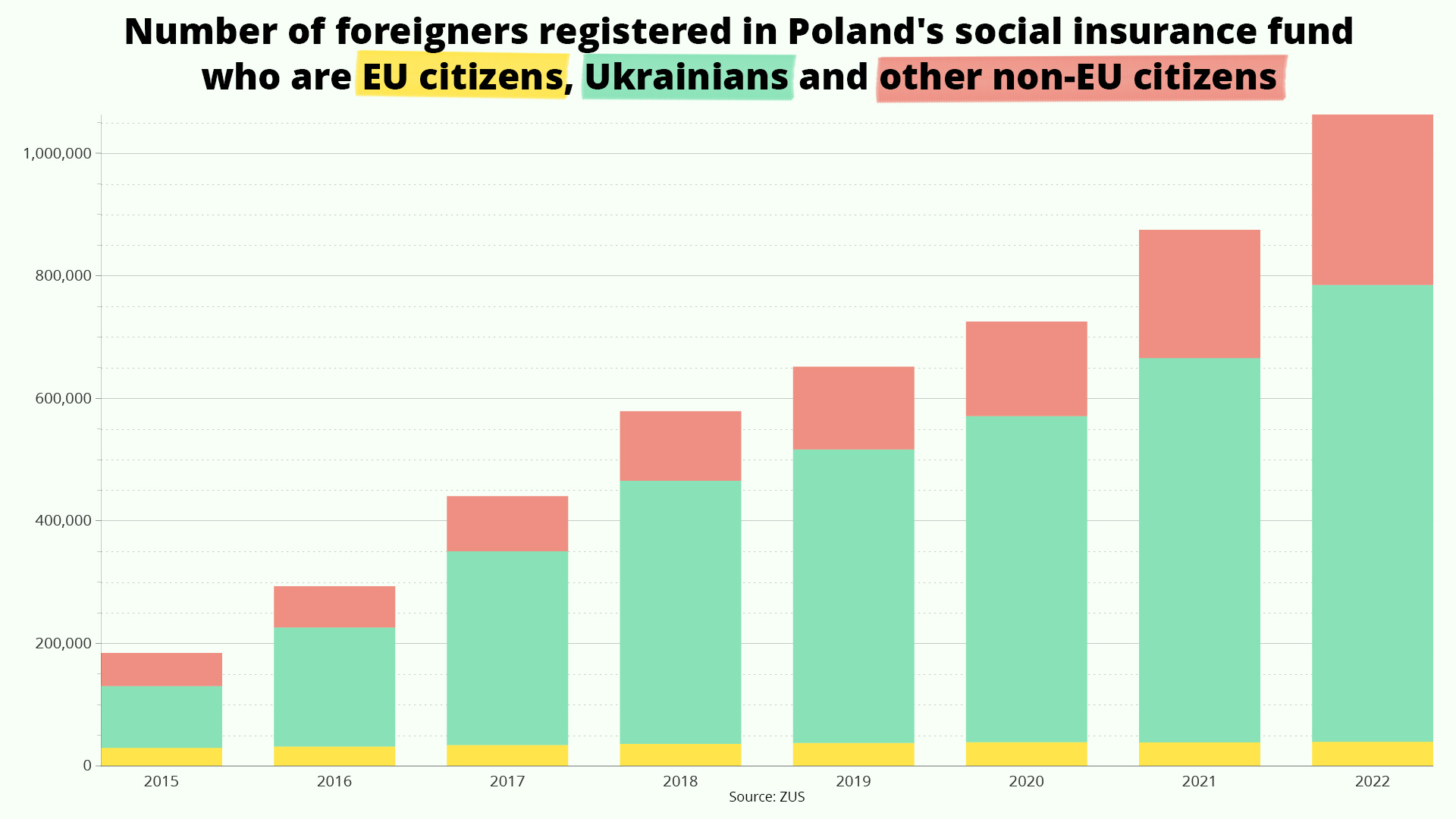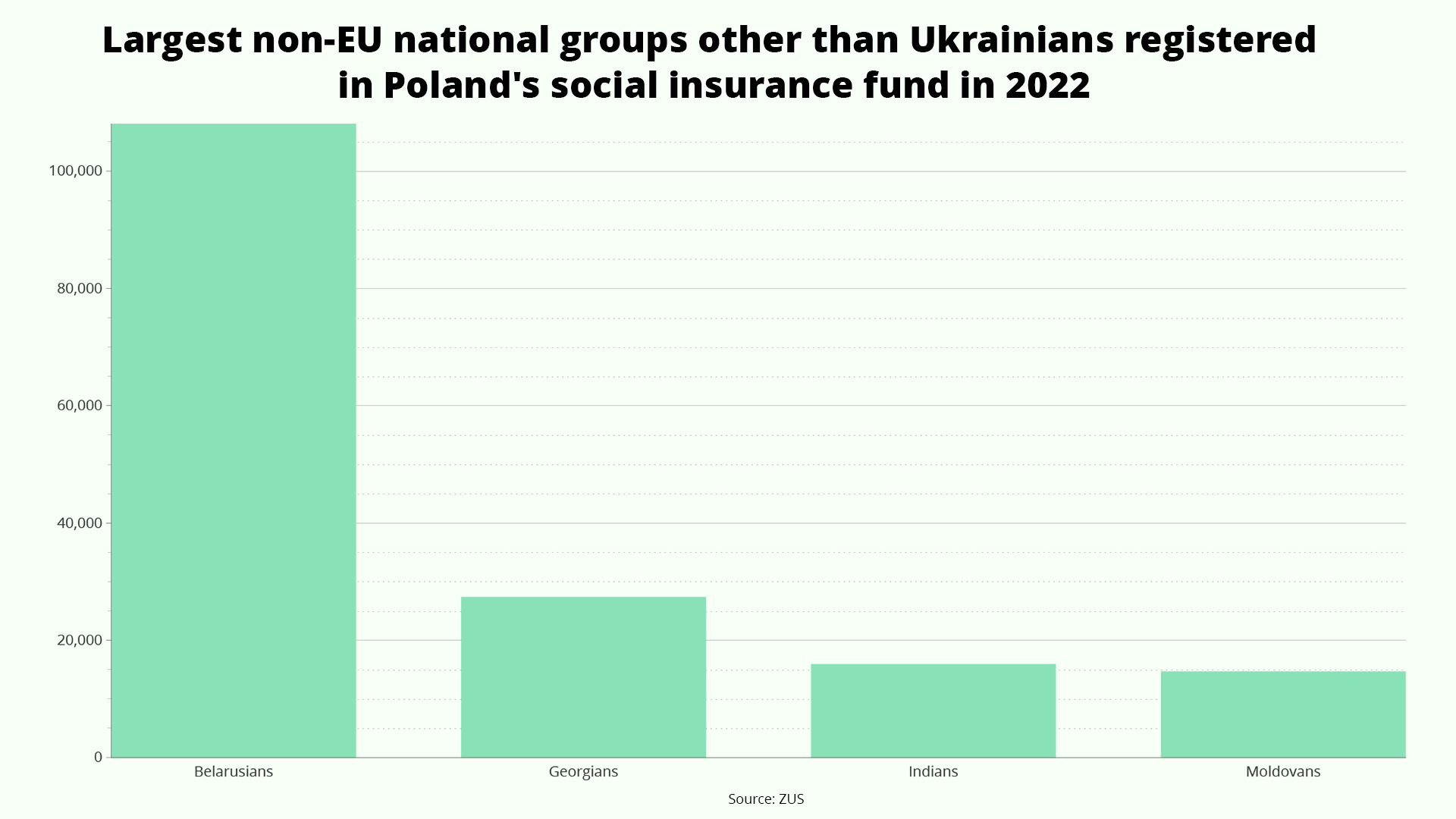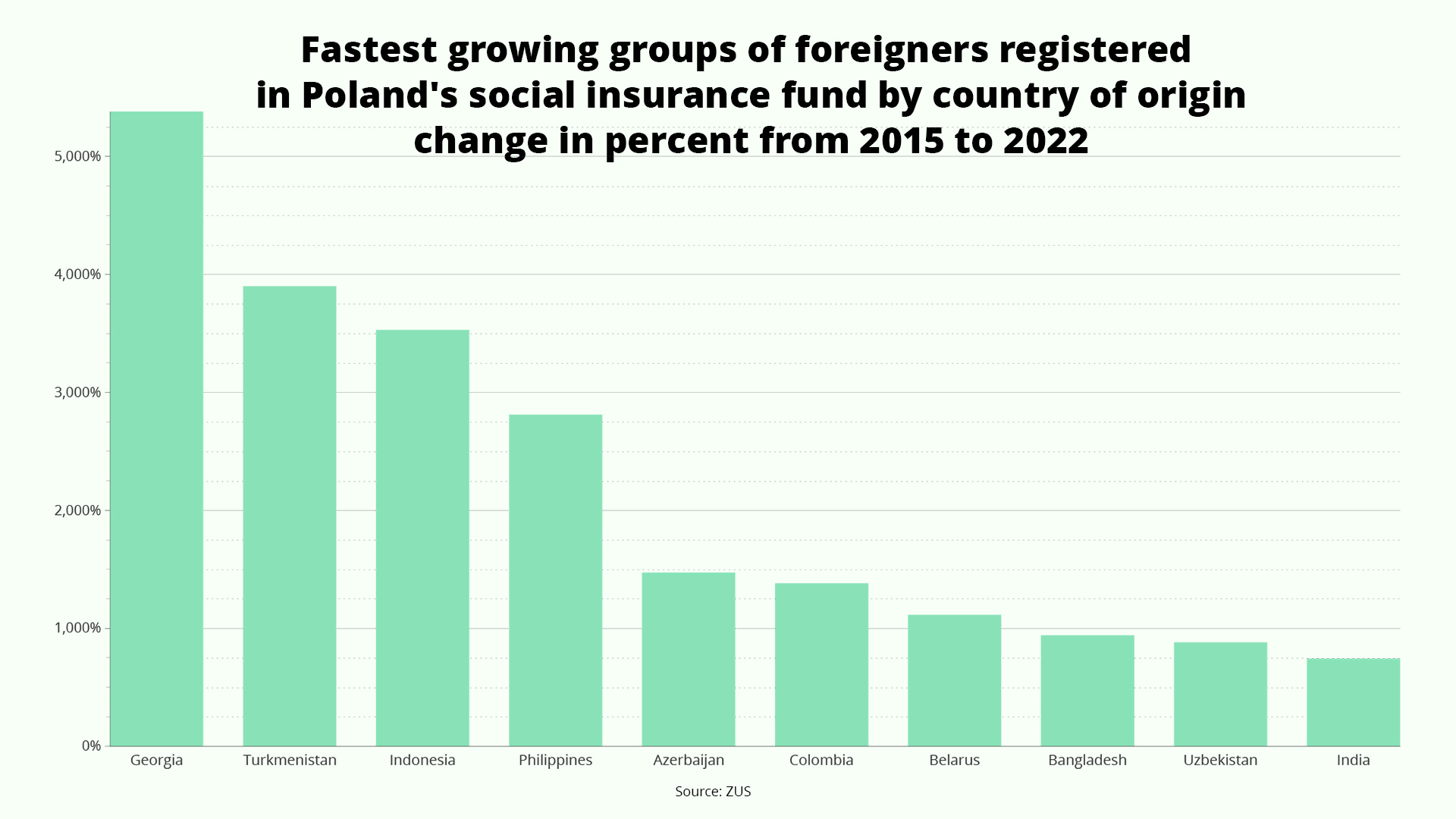In order to maintain its current ratio of working-age population to retirees, Poland would need to attract almost two million immigrant workers over the next decade, the state Social Insurance Institution (ZUS) has found in a new report.
ZUS notes that Poland has already been drawing record and growing numbers of immigrants in recent years, with 74,000 new foreigners registered in the social-insurance system in 2020, 150,000 in 2021 and 188,000 in 2022.
However, it admits that the two million target – which would require over 200,000 new foreign workers to arrive every year for the next decade – is “unrealistic”.
Poland has issued more first residence permits to non-EU immigrants than any other EU member state for the fifth year running.
It issued almost one million permits in 2021, more than twice as much as any other country and one third of the EU total https://t.co/dv26mHQfWt
— Notes from Poland 🇵🇱 (@notesfrompoland) August 11, 2022
Since 2015, Poland has experienced levels of immigration unprecedented in the country’s history and among the highest in the European Union during that period.
In its new report, ZUS notes that, from 2009 to the end of 2014, the number of foreigners in its system grew by 59,300. By contrast, between 2015 and the end of 2022, it rose by 938,900.
That resulted in the figure passing one million for the first time last year, reaching 1.06 million by the end of December 2022. Around three quarters of those, 745,980, were Ukrainians, with a further 277,942 from other non-EU countries and 39,339 from EU countries.

Among non-EU countries, the largest migrant groups apart from Ukrainians were citizens of Belarus (108,111), Georgia (27,385), India (15,661) and Moldova (14,685).

Georgians were also the fastest-growing group between 2015 and 2022, with their numbers rising 54-fold. They were followed by Turkmen (with a 39-fold increase), Indonesians (36-fold), Filipinos (29-fold), Azerbaijanis (16-fold) and Colombians (15-fold).

The growing number of foreign workers has already had a big impact on Poland’s social-insurance system. By the end of 2022, they were paying 5.3% of ZUS premiums, up from 1.5% in 2016. In absolute terms, their contribution rose from 3 billion zloty (€674 million) in 2017 to 11.8 billion (€2.7 billion) in 2022.
However, ZUS notes that the rise in immigration has not been enough to fully compensate for Poland’s ageing society, which results from one of the lowest birth rates in Europe and increasing life expectancy.
The share of working-age people as a proportion of Poland’s population fell from 64.2% in 2011 to 59% in 2021, while the post-working-age population rose from 17.3% to 22.6% in that time.
ZUS forecasts that Poland’s dependency ratio – meaning the proportion of people not of working age to those of working age – will rise from 39% in 2022 to 44.1% by 2032.
Poland's population is set to shrink 23% by 2100, the seventh largest decline in the EU, new @EU_Eurostat forecasts show.
The ratio of the elderly to the working-age population is set to rise from 30% to 60% over that period https://t.co/NhL99Noizb
— Notes from Poland 🇵🇱 (@notesfrompoland) April 20, 2023
To maintain the 2022 depedency ratio, Poland would need to increase its number of foreign workers by 200,000 to 400,000 per year, with a total rise of around 1.8 million by 2032, calculates ZUS, though it admits that this figure is “unrealistic”.
However, it adds that reducing the rise in the dependency ratio by half would require an annual increase of 100,000 to 200,000 foreign workers per year, which is much more realistic given that Poland has achieved that figure in each of the last two years.
“Foreigners coming to Poland may improve the demographic situation to some extent,” concludes ZUS, “but they will not stop the unfavourable trends related to the ageing of the society.”
A “container town” that will house up to 6,000 foreign workers – mainly from Asia – has been set up at the site of a chemicals plant being built by Polish state energy firm Orlen.
The facility features canteens, a police station, and even a cricket pitch https://t.co/QLW79SMCSz
— Notes from Poland 🇵🇱 (@notesfrompoland) June 20, 2023
Main image credit: Franciszek Mazur/Agencja Wyborcza.pl

Daniel Tilles is editor-in-chief of Notes from Poland. He has written on Polish affairs for a wide range of publications, including Foreign Policy, POLITICO Europe, EUobserver and Dziennik Gazeta Prawna.




















